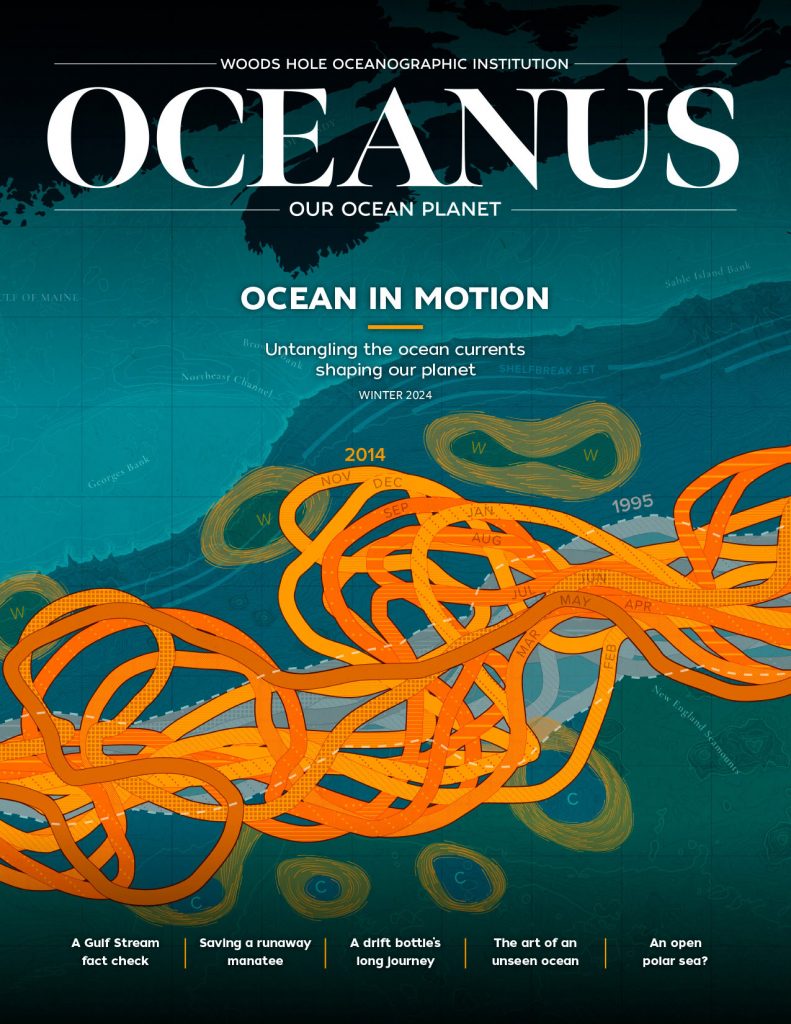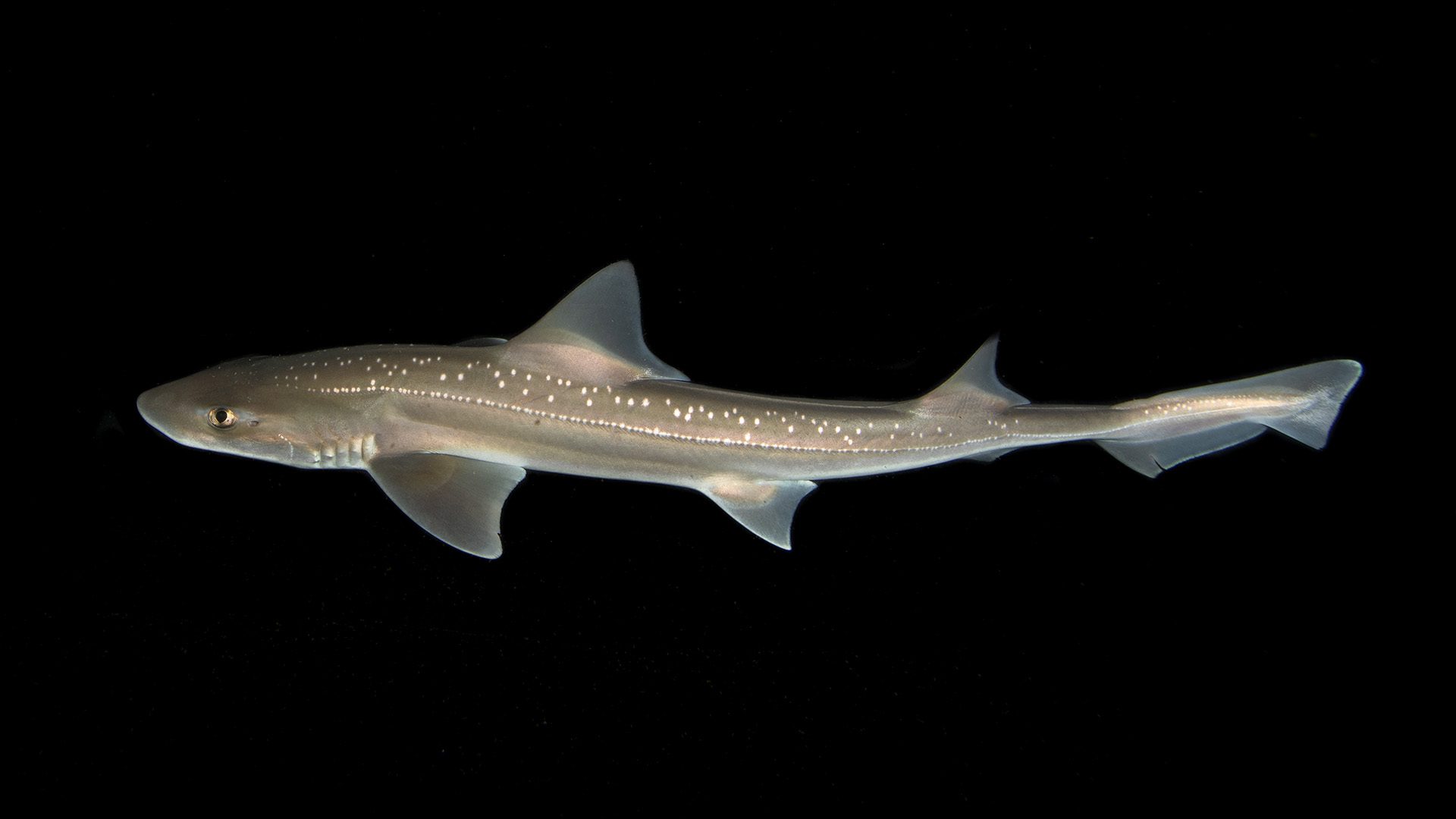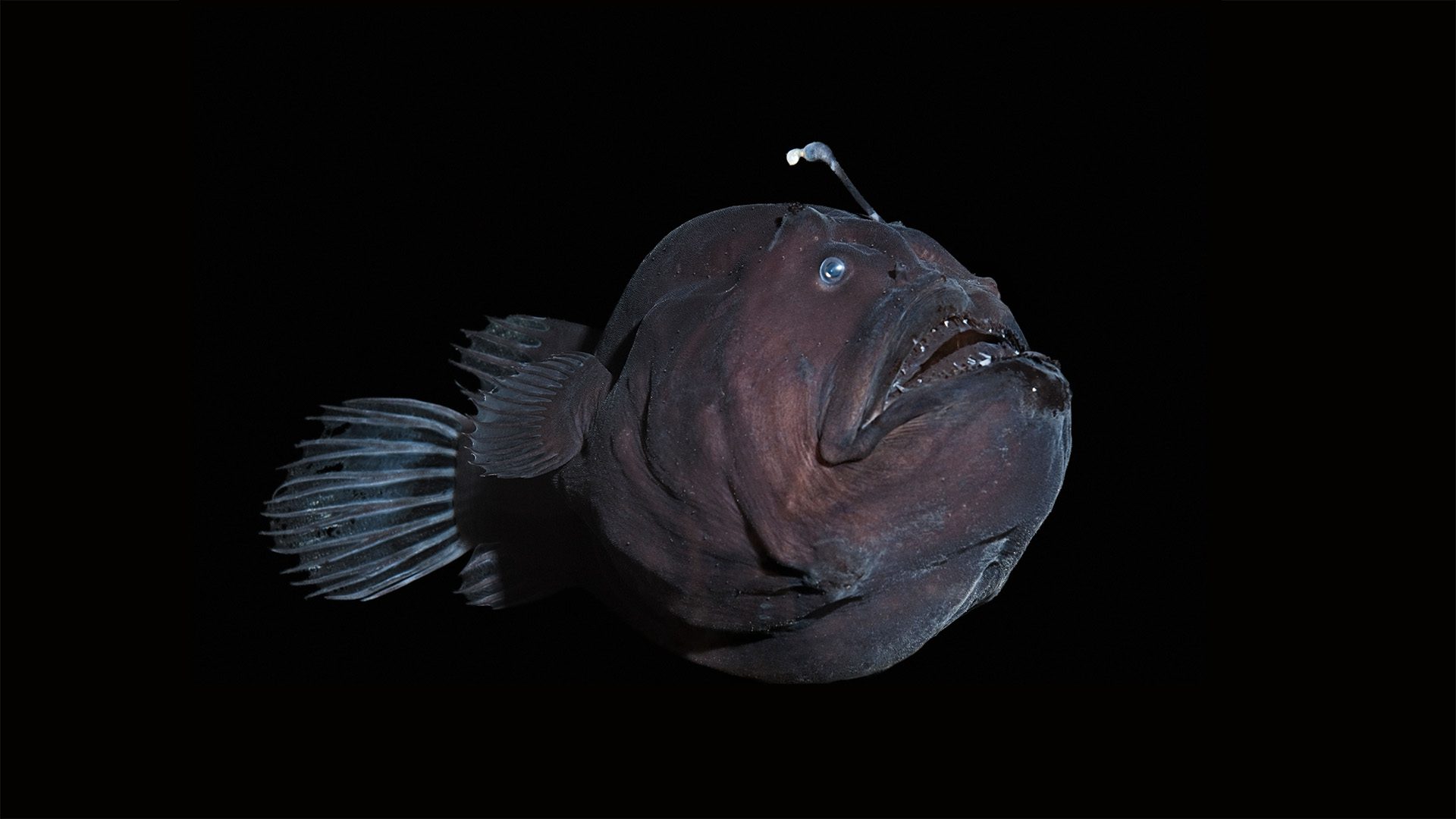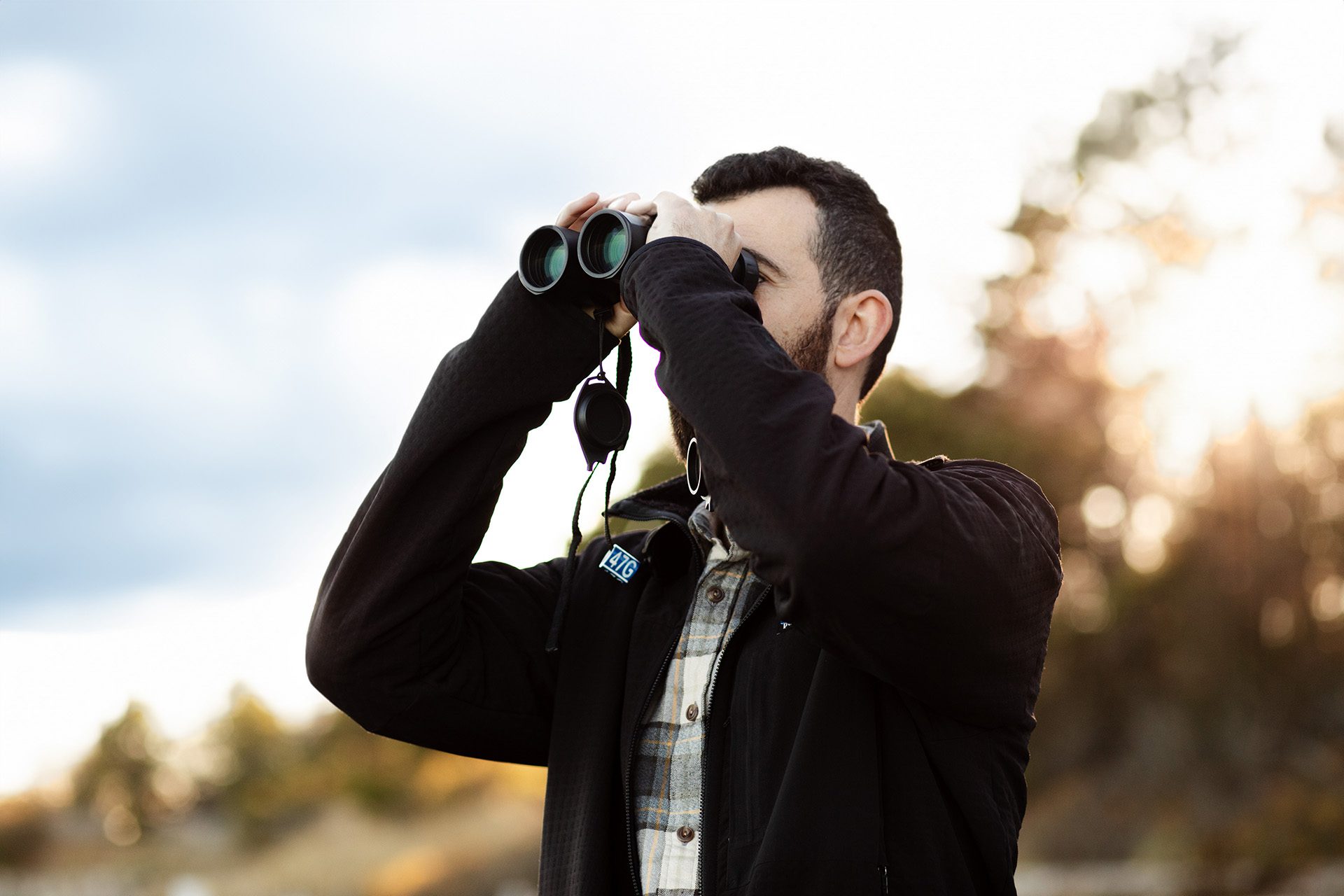
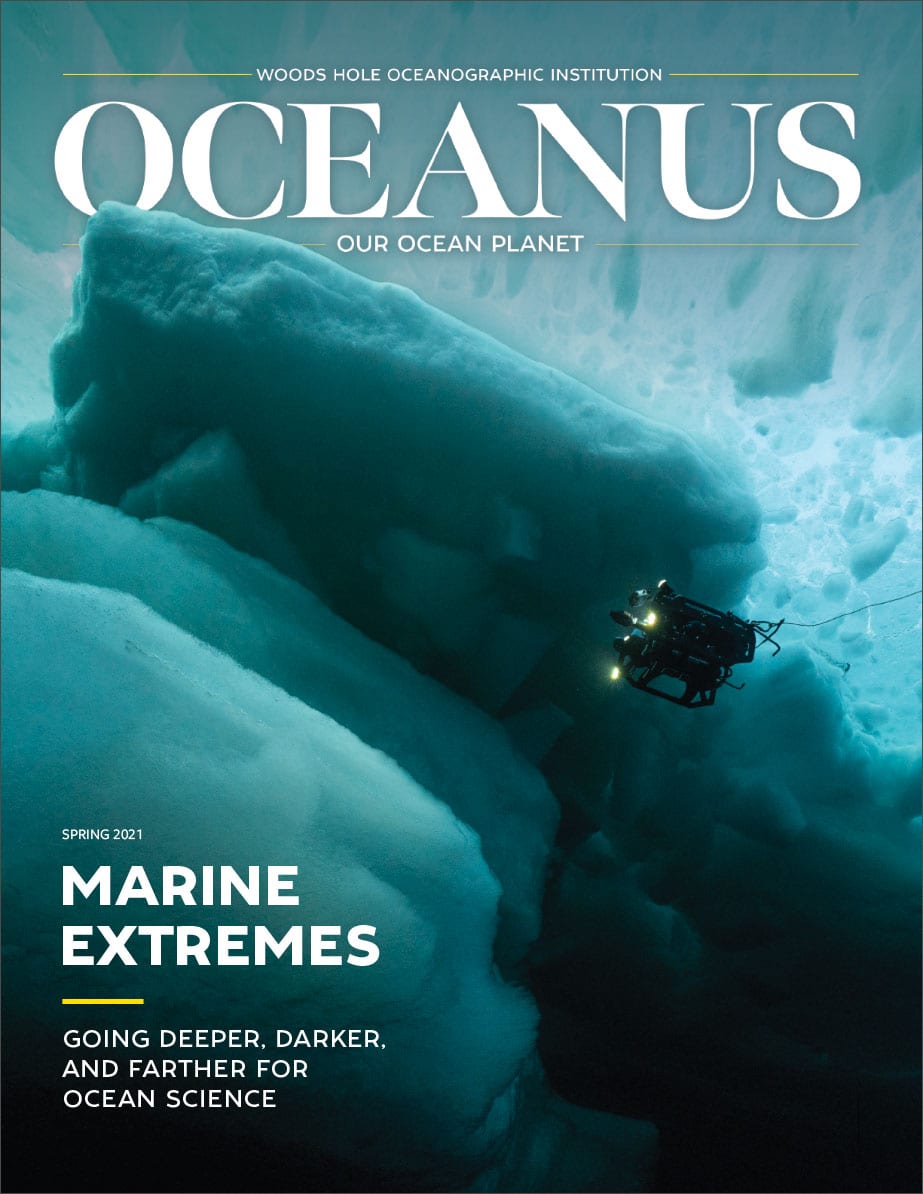 This article printed in Oceanus Spring 2021
This article printed in Oceanus Spring 2021
Estimated reading time: 4 minutes

Daniel P. Zitterbart
Assistant Scientist, Applied Ocean Physics and Engineering
In my group, we use remote sensing of animal behavior to understand more about ocean and ecosystem health. I am especially interested in understanding the impacts of global change on the Southern Ocean’s ecosystem, which immediately takes us to extremes: Our remote-controlled autonomous observing systems have to withstand temperatures down to -50° C (-58° F) and snowstorms with wind speeds of more than 100 mph.
We are continuously monitoring several penguin colonies around Antarctica and the sub-Antarctic islands. One way that emperor penguins cope with the extreme climate is by huddling together for warmth. Based on the environmental conditions when the penguins start to huddle, we can infer the penguins’ thermal insulation, which is largely determined by a layer of subcutaneous fat. This provides a way to estimate the average energy/fat reserves of the colony, the equivalent of weighing 25,000 penguins, without ruffling a feather.
Tracking energy reserves of such a penguin colony over time helps us to better understand the health of the species as well as the food resources in the ocean, a proxy for ocean health.

Shari Rohret
MIT-WHOI Joint Program student, Bernhard Lab
In Joan Bernhard’s lab at WHOI, I am studying the adaptations that allow amoebalike microbes called foraminiferan protists to live in environments without any oxygen.
To do this, I get to dive into a unique and underexplored habitat: karst subterranean estuaries. Diving into these underwater caves with a mix of fresh- and saltwater is a technical challenge I am passionate about. It presents a rare and profound experience in an environment that not many divers have the pleasure of exploring and studying.
Because these complex cave systems are completely dark, there is no photosynthesis to produce oxygen in deeper portions of the cave. The water also has two distinct salinity gradations, known as haloclines, which cause large variations in the geochemical makeup of the environment. Foraminifera can live in these awesome settings. We can use their fossilized shells to help reconstruct past climate conditions and, as low-oxygen areas in the ocean continue to grow, to understand how some organisms may be able to adapt in the future. Going forward, I hope to ascertain the metabolic pathways that these fascinating foraminifera invoke to be extremophiles.

Rebecca Chmiel
MIT-WHOI Joint Program student, Saito Lab
As a marine chemist, I study the cycling of trace metals in the ocean. Marine phytoplankton need tiny amounts of metals in their diet just like humans need iron and zinc.
Most metals become dissolved in seawater when they are deposited by a dust cloud or suspended in a river sediment plume. But these sources are rare in the most remote parts of the ocean. In the seas surrounding Antarctica, for example, phytoplankton suffer from “anemia” because their growth is limited by a lack of iron and cobalt-containing vitamin B₁₂.
On oceanographic expeditions, we have to be extremely careful to keep seawater samples pristine. We’re trying to measure minute traces of metal in seawater while traveling on a giant metal ship covered in metal-rich grease and powered by metal-rich fuel. We use special acid-washed plastic and titanium equipment to take the samples, and we work in a large “bubble” of plastic sheeting in the ship’s laboratory. We wear metal-free lab coats inside the bubble and Crocs to avoid tracking in dust. It may sound like overkill, but this remote seawater has seen so little metal that even ambient dust in the air around a metal ship can contaminate it!

Hanny Rivera
Postdoctoral investigator, Meyer-Kaiser Lab
In my work on remote coral reefs in the Central Pacific Ocean and the Caribbean, I have been able to visit numerous, essentially pristine reefs. I study how these ecosystems, which are critical to ocean health, are responding to climate change. While each expedition is an amazing experience, the weather and the wildlife can definitely tilt things towards the extreme at times.
The roughest time I ever had at sea was on a crossing from Barbados to Curaçao. My lab mates and I were on a sailboat, the Seadragon, and we got caught in a tropical storm. For two days, we tilted and tossed in the waves. This was the first time I had been on a proper sailboat and I definitely fell out of bed on multiple occasions. I had a top bunk too! When we finally emerged into calm seas and a blue sky, it was quite the relief.
Coral coring requires diving with multiple scuba tanks and lots of heavy equipment to power the drills. The noise often draws the attention of curious wildlife, who don’t make the work any easier. During one dive, a young blacktip reef shark kept trying to bite my fins! Another bit the oar of our sea kayak. At least it wasn’t my leg ....
